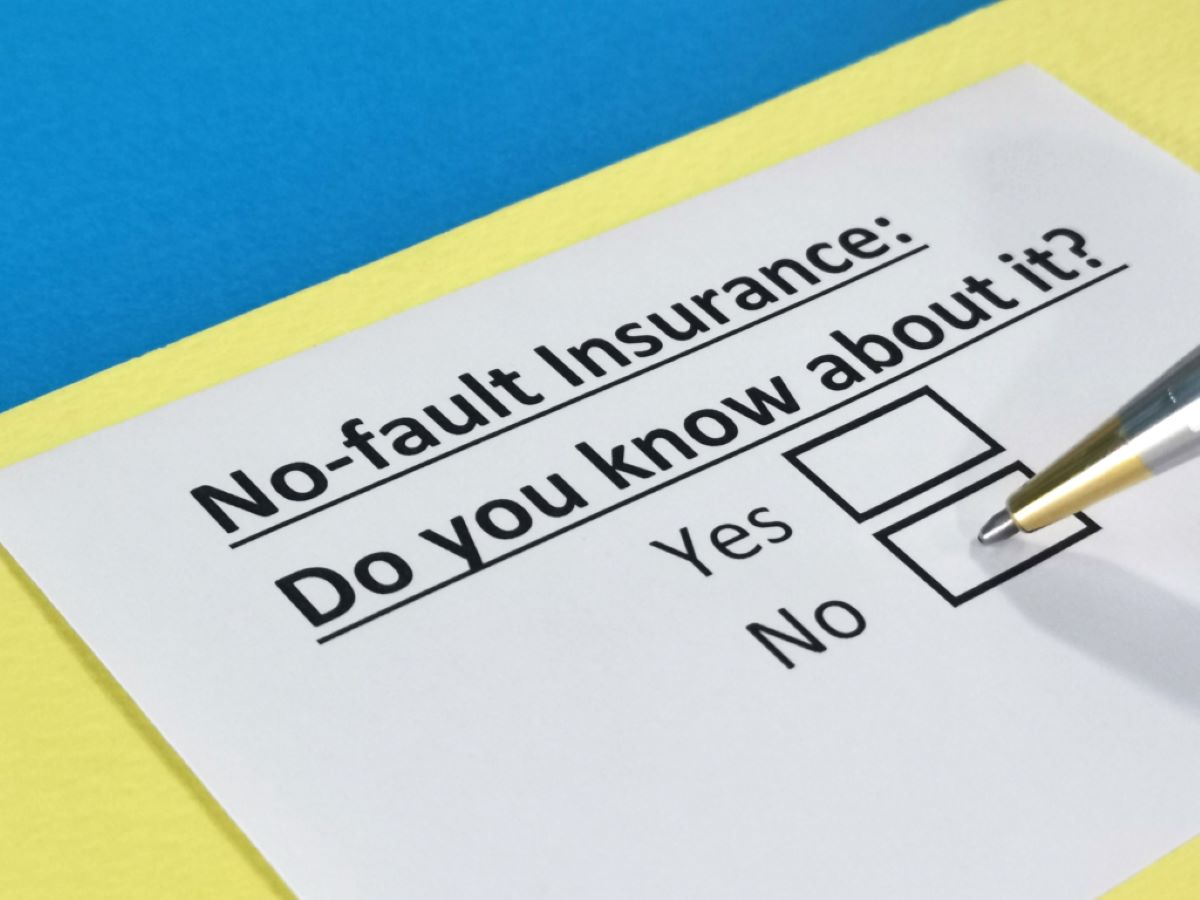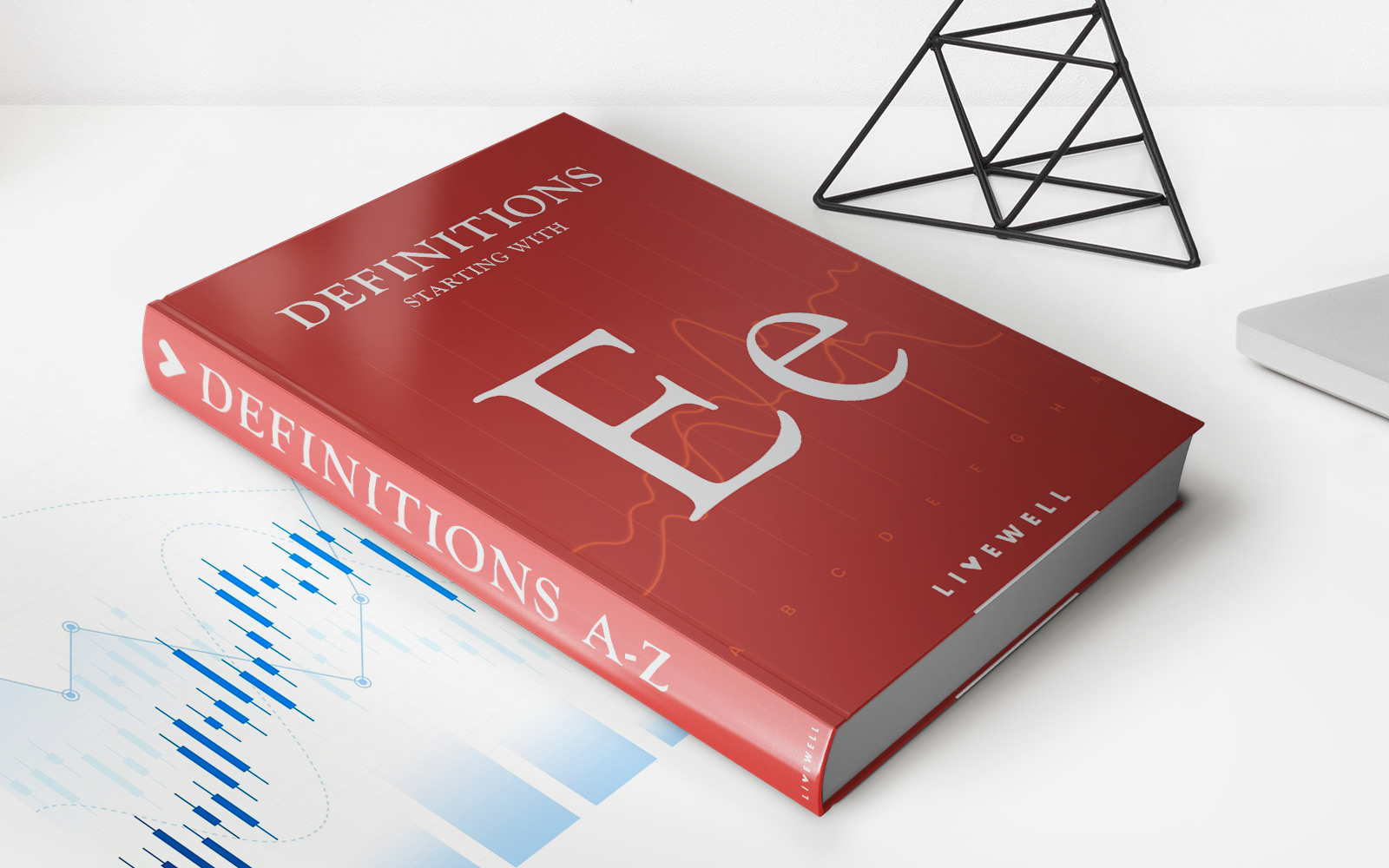

Finance
How Does Michigan No-Fault Insurance Work?
Published: November 12, 2023
Learn how Michigan no-fault insurance operates and its impact on your financial wellbeing. Understand the intricacies of Michigan's unique insurance system.
(Many of the links in this article redirect to a specific reviewed product. Your purchase of these products through affiliate links helps to generate commission for LiveWell, at no extra cost. Learn more)
Table of Contents
- Introduction
- What is No-Fault Insurance?
- Michigan’s No-Fault Insurance System
- Personal Injury Protection (PIP) Coverage
- Bodily Injury Liability Coverage
- Property Protection Insurance (PPI) Coverage
- Residual Liability Insurance
- Mini-Tort Coverage
- Uninsured and Underinsured Motorist Coverage
- Choosing the Right Amount of Coverage
- No-Fault Insurance Claims Process
- Benefits of Michigan’s No-Fault Insurance System
- Challenges and Controversies
- Conclusion
Introduction
Understanding how Michigan’s no-fault insurance works is essential for residents of the state. No-fault insurance is a type of auto insurance system that provides coverage to drivers regardless of who was at fault for the accident. Rather than having to prove fault in order to receive compensation for injuries and damages, individuals involved in an accident can rely on their own insurance coverage.
The concept of no-fault insurance aims to streamline the insurance claims process and ensure that injured parties receive prompt and adequate compensation. This system was introduced to reduce the burden on the court system and provide faster resolution to accident claims.
In Michigan, the no-fault insurance system has been in place since 1973. It is mandatory for all drivers to carry no-fault insurance coverage as part of the state’s auto insurance laws. Under this system, drivers are required to carry Personal Injury Protection (PIP) coverage, which helps cover medical expenses and lost wages in the event of an accident.
Michigan’s no-fault insurance system also provides coverage for property protection, residual liability, mini-tort, and uninsured/underinsured motorist. Each of these coverage types plays a role in ensuring that individuals involved in accidents are protected financially and can recover their losses.
This article will delve deeper into the various components of Michigan’s no-fault insurance system, explaining how each type of coverage works and highlighting the benefits and challenges of the system. By the end, readers will have a comprehensive understanding of how no-fault insurance operates in Michigan and how it affects them as drivers.
What is No-Fault Insurance?
No-fault insurance is a system that provides coverage for drivers involved in an accident, regardless of who was at fault. In traditional insurance systems, the driver at fault is responsible for compensating the injured party. However, with no-fault insurance, individuals can rely on their own insurance coverage to pay for medical expenses, lost wages, and other damages resulting from an accident.
The primary objective of no-fault insurance is to expedite the claims process and ensure that injured parties receive prompt compensation without having to go through lengthy court proceedings. This system aims to remove the need to establish fault and reduce the backlog of cases in the legal system.
Under a no-fault insurance system, each driver is required to carry their own insurance coverage that includes Personal Injury Protection (PIP). PIP coverage provides benefits such as medical expense coverage, income replacement for lost wages, and rehabilitation expenses.
One of the advantages of no-fault insurance is that it provides coverage regardless of who caused the accident. This means that individuals can quickly access medical treatment and other necessary services without having to wait for the resolution of a fault determination process.
However, it’s important to note that no-fault insurance does not absolve drivers of responsibility. It simply shifts the responsibility for compensation to the driver’s own insurance policy. In cases where serious injuries or damages occur, it is still possible to pursue a lawsuit against the at-fault driver if it meets certain criteria.
No-fault insurance systems can vary from state to state, as each has its own regulations and requirements. Some states have pure no-fault systems where drivers can’t sue for damages unless specific thresholds are met, while others have modified no-fault systems that allow lawsuits under certain circumstances.
Michigan operates under a unique no-fault insurance system, which we will explore further in the following sections. Understanding how Michigan’s no-fault insurance operates is crucial for all residents and drivers in the state.
Michigan’s No-Fault Insurance System
Michigan has one of the most comprehensive and unique no-fault insurance systems in the United States. The state’s system is designed to provide extensive coverage and benefits to individuals involved in auto accidents. Understanding the key components of Michigan’s no-fault insurance system is crucial for all drivers in the state.
One of the primary features of Michigan’s no-fault insurance system is the requirement for drivers to carry Personal Injury Protection (PIP) coverage. PIP coverage provides medical benefits, lost wages, and other associated expenses for individuals injured in an accident, regardless of fault. It is mandatory for all drivers in Michigan to have a minimum amount of PIP coverage.
In addition to PIP coverage, Michigan drivers are also required to carry other types of auto insurance coverage. These include Bodily Injury Liability coverage, Property Protection Insurance (PPI) coverage, and Residual Liability Insurance.
Bodily Injury Liability coverage provides protection for injuries caused by the insured driver to others involved in an accident. This coverage helps pay for medical expenses, pain and suffering, and other damages suffered by the injured party.
Property Protection Insurance (PPI) coverage, on the other hand, provides compensation for damage caused by an insured driver to another person’s property, such as their vehicle or other structures.
Residual Liability Insurance covers an insured driver if they are sued for damages that exceed the limits of their PIP and Bodily Injury Liability coverage. This coverage provides additional financial protection and helps ensure that drivers are not held personally liable for large expenses resulting from a lawsuit.
Michigan’s no-fault insurance system also includes Mini-Tort coverage, which allows drivers to sue for up to $1,000 in damages to their vehicle not covered by insurance. This coverage is intended to provide a limited avenue for recovering damages in cases where the driver at fault is determined to be more than 50% responsible for the accident.
Lastly, Michigan requires drivers to carry Uninsured and Underinsured Motorist Coverage. This coverage protects insured drivers if they are involved in an accident with a driver who does not have insurance or has insufficient coverage to pay for damages.
In the next sections, we will explore each of these types of coverage in more detail, highlighting their specific benefits and requirements.
Personal Injury Protection (PIP) Coverage
Personal Injury Protection (PIP) coverage is a mandatory component of Michigan’s no-fault insurance system. It provides benefits and coverage for medical expenses, lost wages, and rehabilitation expenses for individuals injured in an auto accident, regardless of who was at fault.
PIP coverage is designed to ensure that individuals involved in accidents have access to necessary medical treatment and support services without delay. It offers a wide range of benefits, including coverage for medical expenses, attendant care services, replacement services, and wage loss benefits.
Under Michigan’s PIP coverage, medical benefits are available to cover hospitalization, surgery, doctor’s visits, prescription medications, and other necessary medical treatments related to injuries sustained in an accident. This coverage is often comprehensive and can extend to long-term care and rehabilitation services.
Attendant care benefits are also provided under PIP coverage and cover the cost of in-home assistance for individuals who require help with their daily activities as a result of their injuries. This could include assistance with bathing, dressing, and other personal care needs.
Replacement services, such as reimbursement for household chores or hiring someone to perform tasks that the injured person can no longer do, can also be covered under PIP. This ensures that the injured individual can continue to maintain their daily living needs despite their injuries.
Additionally, PIP coverage includes wage loss benefits to compensate individuals who are unable to work due to injuries sustained in an accident. These benefits provide a portion of their lost income, helping to alleviate the financial burden during their recovery period.
It is important to note that PIP coverage has specific limits and requirements. The minimum coverage required by Michigan law is $250,000, but drivers have the option to select higher coverage limits if desired.
Michigan’s PIP coverage applies to the insured individual and their household members, as well as passengers in their vehicle. In the event of an accident, these individuals can file claims with their own insurance company for PIP benefits.
It’s worth mentioning that Michigan’s PIP coverage does not cover damages such as pain and suffering. These damages would typically be pursued through a liability claim against the at-fault party, if applicable.
Overall, PIP coverage in Michigan plays a vital role in providing financial protection and necessary support services for individuals injured in auto accidents. It helps ensure that medical treatment and other related expenses are promptly and adequately covered, regardless of fault.
Bodily Injury Liability Coverage
Bodily Injury Liability coverage is an important component of Michigan’s no-fault insurance system. This type of coverage provides protection for injuries caused by an insured driver to others involved in an accident. It helps pay for medical expenses, pain and suffering, and other damages suffered by the injured party.
In Michigan, drivers are required to carry Bodily Injury Liability coverage with minimum limits of $50,000 per person and $100,000 per accident. These limits determine the maximum amount that the insurance company will pay for injuries to a single individual or multiple individuals in an accident.
If an insured driver is at fault in an accident that causes injuries to others, Bodily Injury Liability coverage will come into play. It covers the injured party’s medical expenses, rehabilitation costs, and other associated damages up to the coverage limits. This coverage helps ensure that the injured individuals receive the necessary compensation for their injuries and related expenses.
Moreover, Bodily Injury Liability coverage can also cover legal costs if the injured party files a lawsuit against the at-fault driver. It provides financial protection and representation if the case goes to court.
It’s important to note that Bodily Injury Liability coverage does not provide benefits to the insured driver or their passengers. It only covers injuries and damages caused to others involved in an accident for which the insured driver is found liable.
When selecting Bodily Injury Liability coverage, it is crucial to consider the potential expenses and the limits that provide adequate protection. It’s recommended to assess personal financial circumstances and the value of assets to determine appropriate coverage limits. Obtaining coverage beyond the minimum requirements can provide additional protection in case of severe injuries or lawsuits.
Michigan’s Bodily Injury Liability coverage helps ensure that individuals who are injured due to the actions of an insured driver receive the necessary compensation for their injuries and damages. It provides a level of financial protection for both the insured driver and other parties involved in the accident.
Property Protection Insurance (PPI) Coverage
Property Protection Insurance (PPI) coverage is a mandatory component of Michigan’s no-fault insurance system. It provides coverage for damages caused by an insured driver to another person’s property, such as their vehicle or other structures.
In the event of an accident where the insured driver is at fault and causes property damage, PPI coverage will come into play. This coverage helps pay for the repair or replacement of the damaged property, subject to the policy limits.
Michigan law requires drivers to carry a minimum of $1 million in PPI coverage. This ensures that there is sufficient coverage to compensate for significant damage to property caused by an insured driver’s negligence.
PPI coverage applies to damages that occur in Michigan only. If the insured driver causes property damage in another state, their PPI coverage will not apply, and they would need to rely on the property damage liability coverage provided by their auto insurance policy.
It’s important to note that PPI coverage does not provide compensation for damages to the insured driver’s own vehicle. It specifically covers third-party property damage only.
PPI coverage is essential for drivers as it helps protect them from potential financial liability for damaging someone else’s property in an accident. It ensures that the injured party can recover their losses and have their property repaired or replaced without undue financial burden.
When selecting PPI coverage, it’s recommended to consider the potential costs of property damage and choose coverage limits that provide adequate protection. It’s important to assess personal assets and financial circumstances to determine appropriate coverage levels, as higher coverage limits may be necessary for those with significant assets to protect.
By carrying adequate PPI coverage, Michigan drivers can ensure that they are prepared financially to handle property damage claims resulting from an at-fault accident. It provides peace of mind and a level of financial protection for both the insured driver and the injured party involved in the accident.
Residual Liability Insurance
Residual Liability Insurance is an important component of Michigan’s no-fault insurance system. This coverage is designed to protect insured drivers if they are sued for damages that exceed the limits of their Personal Injury Protection (PIP) and Bodily Injury Liability coverage.
In the event of a severe accident where the damages and injuries exceed the coverage limits of the at-fault driver’s insurance, Residual Liability Insurance provides additional financial protection. It helps ensure that the insured driver is not held personally responsible for the excess amounts resulting from a lawsuit.
Michigan law requires drivers to carry a minimum of $500,000 in Residual Liability Insurance to provide sufficient protection in case of lawsuits for catastrophic injuries or significant property damage.
If an insured driver is sued for damages that go beyond their PIP and Bodily Injury Liability coverage limits, the Residual Liability Insurance will cover the excess amount, up to the policy limit. This coverage includes legal defense costs, settlements, and judgments.
It’s important to note that Residual Liability Insurance does not cover the insured driver’s own injuries or damages to their vehicle. It only applies when the insured driver is found liable for injuries and damages to others involved in an accident.
When selecting Residual Liability Insurance coverage, it’s crucial to assess personal financial circumstances and the potential risk of lawsuits. Higher coverage limits may be necessary for individuals with significant assets to protect or those with a higher risk of being involved in accidents that may result in substantial damages or injuries.
Having Residual Liability Insurance provides peace of mind and ensures that drivers are protected from significant financial liability in the event of a serious accident. It provides an extra layer of coverage beyond the standard PIP and Bodily Injury Liability insurance, reducing the risk of being personally responsible for costs that exceed policy limits.
Michigan drivers should carefully consider their insurance needs and consult with their insurance provider to determine appropriate Residual Liability Insurance coverage levels to adequately protect themselves and their assets.
Mini-Tort Coverage
Mini-Tort coverage is a unique component of Michigan’s no-fault insurance system. It allows drivers to seek limited compensation for vehicle damage from the at-fault driver, even if they have their own collision coverage.
In Michigan, when an insured driver is involved in an accident and is determined to be less than 50% at fault, they may be eligible to claim up to $1,000 in damages from the at-fault driver. This is known as Mini-Tort coverage.
The purpose of Mini-Tort coverage is to provide a limited avenue for recovering damages to a vehicle that are not covered by insurance. For example, if the cost of repairs to the insured driver’s vehicle exceeds their deductible, they can file a claim under the Mini-Tort provision to recover the remaining amount up to $1,000.
It’s important to note that Mini-Tort coverage only applies to property damage and does not cover personal injuries or other non-vehicle-related damages.
When making a Mini-Tort claim, the claimant must establish that the at-fault driver was primarily responsible for the accident and that their own actions contributed to less than 50% of the fault. The claimant must also provide documentation of the vehicle damage and the associated repair costs.
It’s essential to understand that Mini-Tort coverage is not applicable if the insured driver is found to be 50% or more at fault for the accident. In such cases, the insured driver would be responsible for their own vehicle damage and would not be eligible to claim under the Mini-Tort provision.
Michigan’s Mini-Tort coverage serves as a small supplement for vehicle damage compensation in situations where the insured driver is only partially at fault. While the $1,000 limit may not cover all repair costs, it can help alleviate some of the financial burden.
Drivers in Michigan should be aware of their Mini-Tort coverage and its limitations. It’s advisable to consult with insurance providers to understand the specifics of Mini-Tort coverage and how it applies in individual cases.
Uninsured and Underinsured Motorist Coverage
Uninsured and Underinsured Motorist Coverage is an important component of Michigan’s no-fault insurance system. This coverage provides protection for insured drivers if they are involved in an accident with a driver who does not have insurance or has insufficient coverage to pay for damages.
Uninsured Motorist Coverage (UM) applies when the insured driver is involved in an accident with an uninsured driver. In such cases, UM coverage helps pay for medical expenses, lost wages, and other damages that the insured driver and their passengers may incur as a result of the accident.
Underinsured Motorist Coverage (UIM) comes into play when the insured driver is involved in an accident with a driver who has insurance, but the coverage limits are insufficient to fully compensate for the damages. UIM coverage helps cover the gap between the at-fault driver’s coverage limits and the actual costs of the injuries and damages suffered by the insured driver and their passengers.
Both UM and UIM coverage are crucial in protecting insured drivers from financial hardship resulting from accidents with uninsured or underinsured drivers. They provide a safety net, ensuring that the insured driver can receive compensation for injuries and damages, even if the at-fault driver lacks the necessary insurance coverage.
In Michigan, drivers are required to carry Uninsured and Underinsured Motorist Coverage with the same coverage limits as their Bodily Injury Liability coverage. These coverage limits help ensure that there is adequate protection in the event of an accident with an uninsured or underinsured driver.
Having Uninsured and Underinsured Motorist Coverage provides peace of mind to drivers, knowing that they are protected financially if they are involved in an accident with a driver who lacks insurance or has insufficient coverage. It helps ensure that medical bills, lost wages, and other damages can be compensated for, even if the at-fault driver cannot afford to pay.
Michigan drivers should review their insurance policies to ensure that they have adequate Uninsured and Underinsured Motorist Coverage to protect themselves and their passengers in the event of an accident with an uninsured or underinsured driver.
Choosing the Right Amount of Coverage
Choosing the right amount of coverage is a crucial decision when it comes to Michigan’s no-fault insurance system. It is essential to strike a balance between having adequate coverage to protect against potential risks and staying within a budget.
When considering the right amount of coverage, it’s important to assess personal circumstances, including financial resources, assets, and potential risks. Here are a few factors to consider when choosing the appropriate coverage levels:
- Medical Expenses: Evaluate potential medical expenses in the event of an accident. Consider the costs of hospitalization, surgeries, rehabilitation, and ongoing care. It may be wise to carry higher Personal Injury Protection (PIP) coverage limits to ensure that medical expenses are adequately covered.
- Asset Protection: If you have significant assets, such as a home or other valuable property, consider obtaining higher coverage limits for Bodily Injury Liability and Residual Liability Insurance. This helps ensure that your assets are protected in case of a lawsuit resulting from a severe accident.
- Collision Deductible: Evaluate your willingness to pay out-of-pocket in the event of a collision. Consider the potential costs of vehicle repairs and weigh that against a higher collision deductible, which can help lower your insurance premiums.
- Mini-Tort Coverage: Assess the value of your vehicle and consider the potential costs of damages that may not be covered by insurance. While Mini-Tort coverage has a limit of $1,000, it can help offset some expenses associated with vehicle damage.
- Uninsured/Underinsured Motorist Coverage: Consider the prevalence of uninsured or underinsured drivers in your area. If these drivers pose a significant risk, it may be advisable to carry higher limits of Uninsured and Underinsured Motorist Coverage to ensure adequate protection for you and your passengers.
It’s also important to review coverage options with your insurance provider and carefully consider the costs and benefits associated with different coverage levels. They can provide guidance and help you understand the potential risks and consequences of inadequate coverage.
While it can be tempting to opt for minimum coverage limits to save on premiums, it’s essential to consider the potential financial impact of an accident. Inadequate coverage could leave you exposed to substantial out-of-pocket expenses and legal liabilities.
By carefully evaluating your circumstances, understanding the available coverage options, and seeking guidance from insurance professionals, you can make an informed decision and choose the right amount of coverage for your needs and budget.
No-Fault Insurance Claims Process
The claims process for no-fault insurance in Michigan is designed to be efficient and streamlined, aiming to provide prompt compensation to individuals involved in auto accidents. Understanding the steps involved in the claims process can help navigate through it effectively.
1. Report the Accident: After an accident occurs, it is important to promptly report it to your insurance company. Provide details about the accident, including the date, time, location, and any other relevant information.
2. Seek Medical Treatment: If you or anyone involved in the accident requires medical attention, seek medical treatment as soon as possible. Inform the healthcare provider that it is an auto accident and provide your insurance information. Remember to keep records of all medical treatment and related expenses.
3. File a PIP Claim: If you were injured in the accident, you will need to file a Personal Injury Protection (PIP) claim with your insurance company. Provide all necessary documentation, such as medical bills, receipts, and proof of lost wages, to support your claim.
4. Cooperate with Investigations: Your insurance company may conduct an investigation to assess the circumstances of the accident and determine liability. Cooperate fully with their inquiries, provide any requested information, and answer their questions truthfully.
5. Property Damage Claim: If your vehicle sustained damages, file a property damage claim with your insurance company. Provide estimates for repairs or replacement, and cooperate with any additional inspections or assessments required.
6. Communicate with Insurance Adjusters: Throughout the claims process, maintain open lines of communication with your insurance company’s claims adjusters. Keep them informed of any developments or changes in your situation.
7. Negotiate a Settlement: Once the insurance company has assessed your claim, they will offer a settlement. Review the offer carefully and consider consulting with an attorney if necessary. Negotiate with the insurance company to reach a fair settlement that adequately covers your expenses and damages.
8. Mediation or Arbitration: If a settlement cannot be reached, the next step may involve mediation or arbitration to resolve the claim. This can help facilitate a resolution outside of the court system.
9. Lawsuit: In rare cases where a settlement agreement cannot be reached through negotiation, mediation, or arbitration, a lawsuit may be necessary. Consult with an attorney to determine the best course of action if legal action is required.
It’s important to note that the claims process may vary depending on the specifics of each case and the insurance company involved. It is advisable to review your insurance policy and consult with your insurance provider to understand the specific procedures and requirements for filing a claim.
By being proactive, providing accurate information, and cooperating with the insurance company, you can help ensure a smooth and efficient claims process and receive the compensation you are entitled to.
Benefits of Michigan’s No-Fault Insurance System
Michigan’s no-fault insurance system offers several benefits to residents and drivers in the state. While it has its challenges and controversies, there are significant advantages to this unique insurance system.
1. Prompt Compensation: One of the key benefits of Michigan’s no-fault insurance system is the ability for individuals involved in accidents to receive prompt compensation for their injuries and damages. There is no need to establish fault or wait for lengthy legal proceedings to conclude before receiving benefits. This allows for faster access to medical treatment, rehabilitation, and other necessary services.
2. Medical Expense Coverage: The mandatory Personal Injury Protection (PIP) coverage in Michigan ensures that individuals injured in accidents have coverage for medical expenses. PIP coverage provides comprehensive benefits, including coverage for hospitalization, surgeries, rehabilitation, and ongoing care. It helps alleviate the financial burden associated with medical treatment and enables individuals to receive the care they need without delay.
3. Wage Loss Benefits: Michigan’s no-fault insurance system also provides wage loss benefits to individuals unable to work due to their injuries. This coverage helps replace a portion of the lost income, ensuring that the injured party can support themselves and their family during their recovery period.
4. Protection Regardless of Fault: Michigan’s no-fault insurance system provides benefits to individuals involved in accidents regardless of fault. This means that even if you are at fault for the accident, you can still access insurance benefits to cover your medical expenses and related damages.
5. Reduced Lawsuits: By providing comprehensive coverage for medical expenses and other damages, Michigan’s no-fault insurance system helps reduce the number of lawsuits related to auto accidents. The system aims to resolve claims efficiently without the need for lengthy court proceedings, easing the burden on the legal system.
6. Coverage for Passengers: Michigan’s no-fault insurance system extends coverage to passengers in insured vehicles. This means that passengers injured in an accident can also receive benefits and compensation for their injuries, regardless of fault.
7. Safeguard against Uninsured Drivers: Uninsured and Underinsured Motorist Coverage is mandatory in Michigan, providing protection in case of accidents involving drivers who lack insurance or have insufficient coverage. This coverage ensures that insured drivers can still recover damages, medical expenses, and other losses if the at-fault driver is unable to provide adequate compensation.
It is important to note that while Michigan’s no-fault insurance system offers several benefits, it also has its challenges and drawbacks. The high costs of insurance premiums and the potential for fraudulent claims have been ongoing concerns within the system.
Overall, Michigan’s no-fault insurance system provides important benefits to individuals involved in accidents, ensuring prompt and comprehensive coverage for medical expenses, wage loss, and other damages. It helps protect individuals from significant financial hardship resulting from auto accidents and provides a level of peace of mind for drivers in the state.
Challenges and Controversies
Despite the benefits, Michigan’s no-fault insurance system has faced significant challenges and controversies over the years. These issues have sparked debates and discussions regarding the effectiveness and sustainability of the system. Here are some of the key challenges and controversies surrounding Michigan’s no-fault insurance:
1. High Insurance Premiums: One of the major concerns for drivers in Michigan is the high cost of insurance premiums. The state has consistently ranked among the highest in the nation for auto insurance rates. The factors contributing to these high premiums include the mandatory unlimited Personal Injury Protection (PIP) coverage and the prevalence of medical provider fraud.
2. Fraud and Overbilling: Michigan’s no-fault insurance system has been plagued by fraudulent activities and excessive billing by medical providers. Some medical clinics and professionals have taken advantage of the unlimited medical expense coverage, leading to inflated bills and fraudulent claims. These fraudulent activities contribute to the rising costs of insurance premiums.
3. Fee Schedule Reforms: To address the issues of inflated medical bills and excessive charging by medical providers, Michigan implemented fee schedule reforms in July 2021. These reforms aim to regulate and reduce the fees charged by medical providers for services rendered to individuals covered by no-fault insurance. While it may help combat fraud and lower costs, fee schedule reforms have also raised concerns about the quality and accessibility of healthcare for accident victims.
4. PIP Choice Options: With the recent reforms, Michigan introduced PIP choice options, allowing drivers to select different levels of PIP coverage. While this provides drivers with more flexibility in managing their insurance costs, it also raises concerns about potential gaps in coverage and the long-term consequences for individuals who opt for lower limits of PIP coverage.
5. Legal Challenges and Lawsuits: The no-fault insurance system in Michigan has faced numerous legal challenges and lawsuits. Some individuals and organizations argue that the high costs and regulations under the no-fault system are burdensome and infringe upon individuals’ rights. These legal battles have added to the complexity and controversy surrounding Michigan’s no-fault insurance system.
6. Equity and Affordability: Another ongoing concern is the impact of high insurance premiums on low-income individuals and families. The cost of auto insurance in Michigan can be financially burdensome, making it more challenging for economically disadvantaged individuals to access necessary coverage.
7. Legislative Reforms: Michigan has undergone several legislative reforms and discussions aimed at addressing the challenges and controversies surrounding the no-fault insurance system. These reforms seek to strike a balance between providing adequate coverage while controlling costs, reducing fraud, and ensuring fairness for all stakeholders.
It is clear that Michigan’s no-fault insurance system is not without its complexities and controversies. Efforts to address these challenges continue, with the goal of creating an insurance system that balances affordability, accessibility, and comprehensive coverage for all drivers in the state.
Conclusion
Michigan’s no-fault insurance system is a unique and comprehensive approach to auto insurance, providing benefits and coverage to individuals involved in accidents regardless of fault. While the system offers advantages such as prompt compensation, medical expense coverage, and protection against uninsured drivers, it also faces challenges and controversies.
High insurance premiums, fraud and overbilling, fee schedule reforms, and legal challenges are among the key issues that have shaped the discussions surrounding Michigan’s no-fault insurance system. The state has taken steps to address these challenges, implementing reforms and engaging in legislative discussions to find a balance between affordability, accessibility, and comprehensive coverage.
Despite the complexities and controversies, it is crucial to recognize the benefits of Michigan’s no-fault insurance system. The system provides prompt compensation, ensuring that individuals receive timely medical treatment and support services. It offers protection regardless of fault, which streamlines the claims process and helps individuals avoid lengthy legal battles to obtain compensation.
Moreover, the system provides a safety net for individuals who suffer catastrophic injuries, offering extensive coverage for medical expenses, rehabilitation, and wage loss benefits. The inclusion of Uninsured and Underinsured Motorist Coverage ensures that insured drivers can still receive compensation even if the at-fault driver lacks insurance or has insufficient coverage.
As Michigan continues to address the challenges and controversies surrounding its no-fault insurance system, it is essential for drivers to carefully assess their insurance needs, choose appropriate coverage levels, and stay informed about reforms and regulations. Consulting with insurance professionals can provide valuable guidance in navigating the complexities of the system and securing adequate protection.
Despite ongoing debates and criticisms, Michigan’s no-fault insurance system remains a fundamental component of the state’s auto insurance laws. Balancing the benefits of comprehensive coverage with addressing the concerns of high costs and fraudulent activities will pave the way for a more effective and sustainable insurance system that benefits all residents and drivers.














